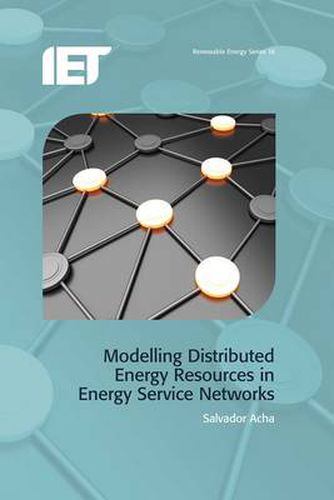Readings Newsletter
Become a Readings Member to make your shopping experience even easier.
Sign in or sign up for free!
You’re not far away from qualifying for FREE standard shipping within Australia
You’ve qualified for FREE standard shipping within Australia
The cart is loading…






The smart-grid concept can mean many things, however there is a consensus that its objective involves seamlessly adopting new technologies to existing infrastructures and maximising the use of resources. Modelling Distributed Energy Resources in Energy Service Networks focuses on modelling two key infrastructures in urban energy systems with embedded technologies. These infrastructures are natural gas and electricity networks and the embedded technologies include cogeneration and electric vehicle devices. The subject is addressed using a holistic modelling framework which serves as a means to an end; this end being to optimise in a coordinated manner the operation of natural gas and electrical infrastructures under the presence of distributed energy resources, thus paving the way in which smart-grids should be managed. The modelling approach developed and presented in this book, under the name ‘time coordinated optimal power flow’ (TCOPF), functions as a decision maker entity that aggregates and coordinates the available DERs according to multiple criteria such as energy prices and utility conditions. The examples prove the TCOPF acts effectively as an unbiased intermediary entity that manages cost-effective interactions between the connected technologies and the distribution network operators, therefore showcasing an integral approach on how to manage new technologies for the benefit of all stakeholders.
$9.00 standard shipping within Australia
FREE standard shipping within Australia for orders over $100.00
Express & International shipping calculated at checkout
The smart-grid concept can mean many things, however there is a consensus that its objective involves seamlessly adopting new technologies to existing infrastructures and maximising the use of resources. Modelling Distributed Energy Resources in Energy Service Networks focuses on modelling two key infrastructures in urban energy systems with embedded technologies. These infrastructures are natural gas and electricity networks and the embedded technologies include cogeneration and electric vehicle devices. The subject is addressed using a holistic modelling framework which serves as a means to an end; this end being to optimise in a coordinated manner the operation of natural gas and electrical infrastructures under the presence of distributed energy resources, thus paving the way in which smart-grids should be managed. The modelling approach developed and presented in this book, under the name ‘time coordinated optimal power flow’ (TCOPF), functions as a decision maker entity that aggregates and coordinates the available DERs according to multiple criteria such as energy prices and utility conditions. The examples prove the TCOPF acts effectively as an unbiased intermediary entity that manages cost-effective interactions between the connected technologies and the distribution network operators, therefore showcasing an integral approach on how to manage new technologies for the benefit of all stakeholders.